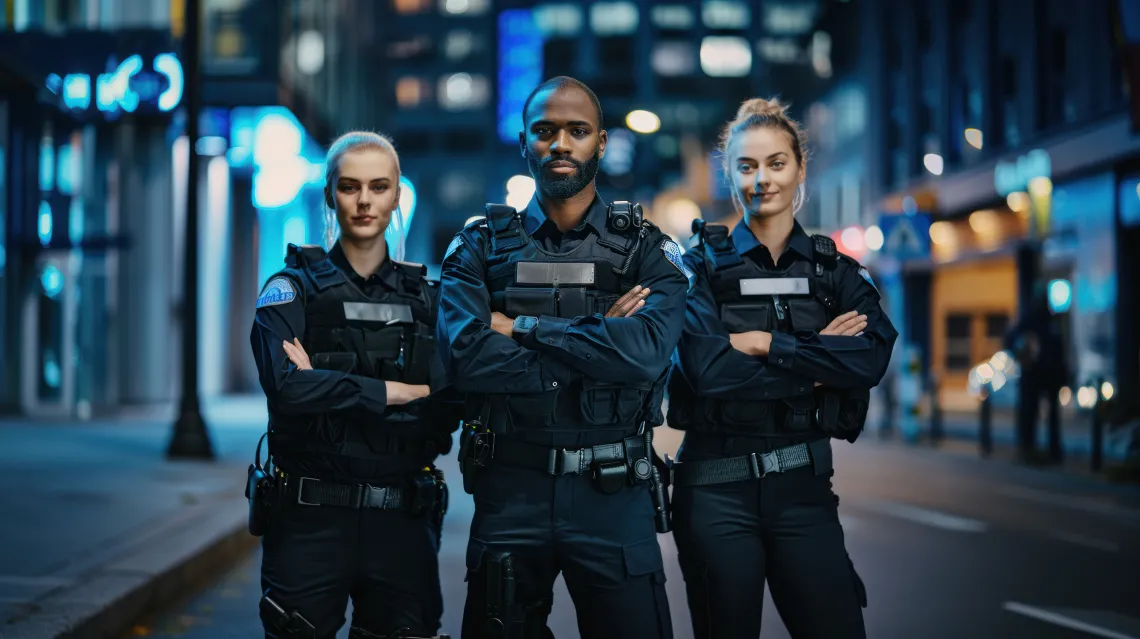
The Law of the Police Online Course
Based on the Casebook by
Rachel Harmon
7.5 Weeks | Fully Online | Self-Paced & Asynchronous | No live lectures
Course Begins March 16, 2026
Welcome to The Law of the Police online course, a first-of-its-kind learning opportunity, based on “The Law of the Police” casebook by Rachel Harmon, University of Virginia, and run in partnership between the American Bar Association Legal Education Police Practices Consortium and the University of Arizona James E. Rogers College of Law.
This virtual, self-paced & asynchronous course is designed to support students from all walks of life to comprehend the laws that police are tasked with upholding, the case law that protects citizens and officers in their interactions, as well as the laws that hold the profession of policing accountable.
Each of the seven weeks is led by a different legal subject matter expert to examine the evolution and reality of policing as well as inspire learners to be part of an evidence-based approach to understanding safety and security which protects the rights and lives of all people.
*The State Bar of Arizona does not approve or accredit CLE activities for the Mandatory Continuing Legal Education requirement. This activity may qualify for up to 10 hours toward your annual CLE requirement for the State Bar of Arizona, including 0 hour(s) of professional responsibility.
This course is:
Free to the Community
Non-credit
Self-paced
Suggested due dates, but no deadlines or end dates
Delivered via the University of Arizona Community Desire2Learn (D2L) Learning Management System
Weekly professional development hour certificates available from the University of Arizona College of Law (18 hours per week)
Meet the Author Rachel Harmon

This course is based on the scholarship of Rachel Harmon. Rachel Harmon is the Harrison Robertson Professor of Law and directs the Center for Criminal Justice at the University of Virginia Law School. She is one of the nation’s leading scholars on policing and the law, a field of study she helped create.
Harmon’s academic writing considers how law influences police practices and how federal, state, and local law can make policing more effective, fairer, and less harmful. Her casebook, “The Law of the Police” (2d ed. 2024), is the first to survey how the law governs police encounters. Her articles on policing have appeared in law reviews as well as criminology and legal theory journals. At UVA Law, she teaches courses on criminal law, criminal procedure and policing law.
This module covers the structure and legal foundations of policing, the essence of modern policing, and the community policing philosophy. During this module, you will explore the different police organizational structures that exist and consider what exactly is the democratic police ideal.
Questions for your consideration throughout this module include: What is the function of modern policing? Do we know what good policing looks like, and how should we foster it? How should modern police grapple with the painful legacy of past police abuses and the ways in which the legacy of racial discrimination still distorts our criminal justice system?
This module explores the structure, history, evolution, and challenges associated with modern policing in the United States through a shared legal and criminological lens.
The primary objective of this module is for you to understand and apply general concepts that govern police investigative practices. You will learn aspects of constitutional criminal procedure investigation rules as derived from the Fourth, Fifth and Sixth Amendments to the United States Constitution, as well as federal, state and local statutory and regulatory rules.
This module explores the topic of preventing crime and making a lawful arrest. While patrolling and investigating, police attempt to thwart crime by various means; one of the most common police tactics is known as the Terry stop, perhaps more commonly known as “stop and frisk.” We will explore the elements of this type of seizure, when an outer search may be performed on the individual and when police cross the boundaries of what the law allows.
In those instances when a crime has been committed or alleged, police may make a lawful arrest of an individual based on police work or based on obtaining a warrant for a lawful arrest. In each of these scenarios, police need to follow the proper protocols to not violate an individual’s 4th Amendment right to be free from unreasonable searches and seizures. In addition to exploring these aspects of policing, we will become familiar with the “reasonable suspicion” standard for performing a Terry-type preventative stop as well as the “probable cause” standard for obtaining a warrant and making a lawful arrest.
This module will introduce police use of force through a discussion of statutory and case law, as well as academic research and scholarship. It will provide an overview of force, and the evaluation standards (with emphasis on the criminal and constitutional standards). It will also address topics such as the force continuum, the duty to intervene, officer-created jeopardy, deadly force training and performance, and de-escalation.
This module broadly addresses the role of federal law in local policing. Although policing is generally a local matter, federal law and federal officials help shape local police priorities and constrain local police actions.
Sub-module A—Federal Influence over Local Policing examines how federal priorities may directly or indirectly shape local policing.
Sub-module B—Policing Resistance examines the limits on how police can respond to resistance. It focuses on limits imposed by the U.S. Constitution and federal statutes.
Module six examines policing car traffic as well as order maintenance policing. This is done through an exploration of how and why the police came to have primary responsibility for enforcing traffic laws followed by how constitutional law has responded to issues of pre-text and discrimination. Finally, other non-constitutional responses to pre-text and discrimination are highlighted including how new technologies propose eliminating the involvement of police officers in traffic stops.
The order maintenance policing portion of this module will define the threshold and legal basis for this topic and consider constitutional limits on vagrancy and the connection to “broken windows” policing through the use of a case study from New York City.
This module will cover suing the police for damages and suing the police for reform. One of the most contentious issues today is how to change policing to make it less harmful and more effective at protecting all communities.
This module dives into two of the most commonly used approaches: suing the police for monetary damages when police conduct results in injury and violations of constitutional rights or federal law and suing the police to secure changes in future police conduct. We’ll look at the major doctrines—and major legal obstacles—to both types of suits and provide some behind-the-scenes insight into how these cases play out.
For Distance Learning/Content information contact, Ginger Hunt, James E. Rogers College of Law: gingershunt@arizona.edu
For registration assistance contact, Arizona Law Online support: law-disted@arizona.edu
